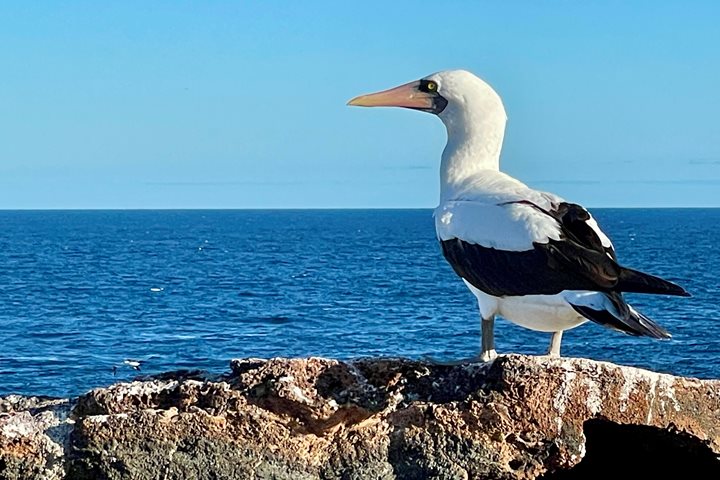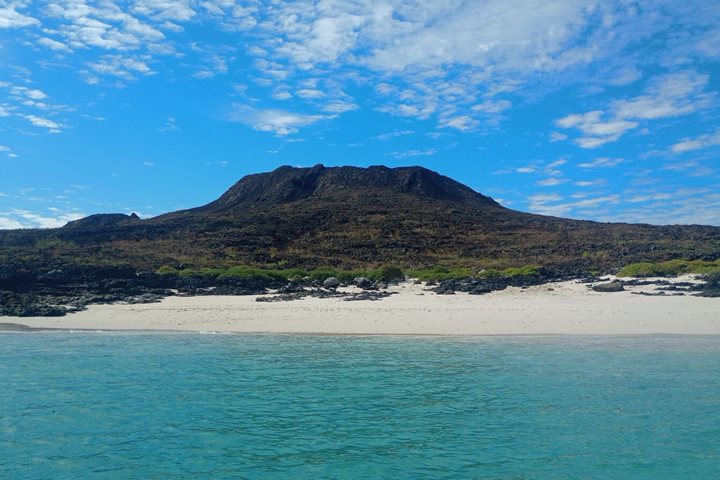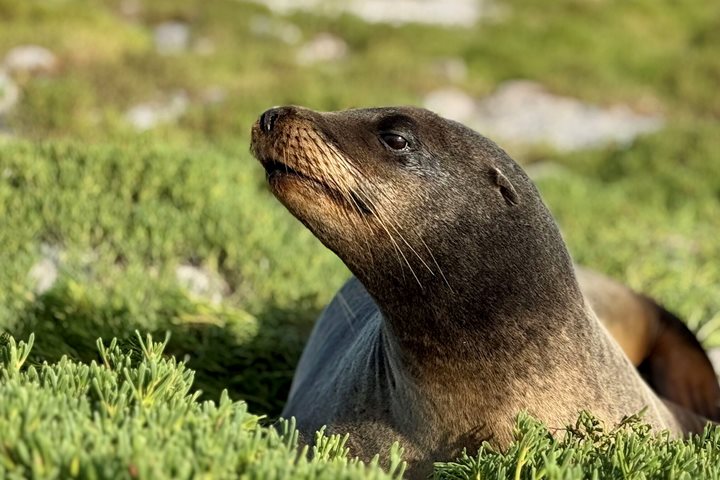Today was our last day exploring the Galápagos Islands and we started before the sun did. As we approached Punta Mangle, southeast of Fernandina, we witnessed one of the most fascinating natural events on earth. We were astonished by the abrupt explosion of the fast evaporation of sea water as hot lava slid into the ocean. This activity started when a fissure opened March 2nd, and it’s been 35 days of degasification. On April 7th it reached the cliffs from Fernandina.
After the breathtaking event, we continued our program with a walk on Fernandina, surrounded by marine iguanas.
At the end of the day, we concluded our adventures with a Zodiac exploration around Punta Vicente Roca on the northeast of Isabela Island. Underwater, the Cromwell upwells bring many nutrients to the surface. This is reflected in the abundance and richness of species we’re able to appreciate, like the massive whales we spotted.







